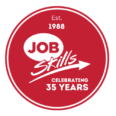
Mastering Work-Life Balance for a Healthier, Happier You
In today’s fast-paced world, achieving work-life balance can feel like chasing a distant dream. For professionals, entrepreneurs, and working parents, finding that equilibrium is crucial for maintaining productivity, mental health, and strong relationships. This blog post will explore practical strategies to help you achieve and maintain a healthy work-life balance.
The Importance of Work-Life Balance
Work-life balance is more than just a buzzword; it’s a vital component of a fulfilling life. In our relentless pursuit of professional success, it’s easy to overlook the importance of personal well-being. Achieving a balanced life enhances your mental health, boosts productivity, and strengthens relationships with loved ones.
Benefits of Achieving a Healthy Work-Life Balance
When you strike the right balance, you don’t just survive—you thrive. Improved mental health reduces stress, leading to better decision-making and increased creativity. Your productivity levels soar as you’re more focused and energized. Personal relationships also flourish, as you have the time and emotional capacity to nurture them.
What to Expect from This Blog
In this comprehensive guide, we’ll cover everything from understanding what work-life balance truly means to practical steps for achieving it. We’ll discuss how to assess your current situation, set clear boundaries, manage your time effectively, prioritize self-care, and much more. By the end of this post, you’ll have actionable tips to start your journey towards a balanced life.
Understanding Work-Life Balance
Definition of Work-Life Balance
Work-life balance refers to the equilibrium between professional responsibilities and personal activities. It’s about finding harmony between your career ambitions and personal life, ensuring neither is neglected. This balance varies from person to person, depending on individual priorities and circumstances.
Common Misconceptions About Work-Life Balance
Many people believe that work-life balance means dividing time equally between work and personal life. However, it’s more about the quality of time spent in each area. Another misconception is that achieving balance is a one-time event. In reality, it requires ongoing adjustments and flexibility.
Why Achieving Balance Is Crucial for Overall Well-Being
A balanced life leads to reduced stress levels, better mental health, and increased job satisfaction. It allows you to be present in both your professional and personal life, leading to a more fulfilling existence. Neglecting either aspect can result in burnout, strained relationships, and decreased productivity.
Assessing Your Current Situation
Identifying Signs of Imbalance
Before you can achieve balance, it’s essential to recognize the signs of imbalance. Physical exhaustion, mental fatigue, strained relationships, and a lack of personal time are clear indicators that something needs to change.
Self-Assessment Questions to Determine Your Current Balance
Ask yourself:
- Are you frequently stressed or overwhelmed?
- Do you feel guilty when taking time off work?
- Are you missing out on important personal events?
These questions can help you identify areas that need attention and improvement.
Setting Clear Boundaries
Importance of Setting Boundaries Between Work and Personal Life
Setting boundaries is crucial for maintaining a clear distinction between work and personal time. This separation helps prevent work from encroaching on your personal life, allowing you to recharge and enjoy quality time with loved ones.
Tips for Establishing Boundaries
- Define Specific Work Hours and Stick to Them: Set clear work hours and avoid working beyond them. This practice helps create a predictable routine and ensures you have time for personal activities.
- Create a Dedicated Workspace at Home: Designate a specific area in your home for work. This separation helps you mentally switch between work and personal modes.
- Communicate Your Boundaries to Colleagues and Family Members: Make your boundaries known to those around you to ensure they respect your time.
Time Management Strategies
Effective Time Management Techniques
Mastering time management is key to achieving work-life balance. Techniques like the Eisenhower Matrix, time blocking, and avoiding multitasking can help you prioritize tasks and manage your time effectively.
Tools for Better Time Management
- Todoist or Trello for Task Management: These tools help you organize tasks, set deadlines, and track progress.
- Google Calendar for Scheduling: Use Google Calendar to schedule work hours, breaks, and personal activities.
Prioritizing Self-Care
Importance of Self-Care in Maintaining Work-Life Balance
Self-care is essential for overall well-being. It helps you recharge, reduces stress, and improves mental health, enabling you to perform better in both professional and personal life.
Types of Self-Care Activities
- Physical Self-Care: Engage in regular exercise, maintain a balanced diet, and ensure adequate sleep.
- Emotional Self-Care: Practice activities like journaling, therapy, and engaging in hobbies that bring you joy.
- Social Self-Care: Spend quality time with loved ones and build supportive relationships.
Creating a Self-Care Routine
Incorporate self-care activities into your daily routine. Dedicate time for physical exercise, emotional activities, and social interactions to ensure a well-rounded approach to self-care.
Learning to Say No
The Power of Saying No in Protecting Your Time and Energy
Learning to say no is a powerful skill in maintaining work-life balance. It helps you protect your time and energy, allowing you to focus on what truly matters.
Tips for Politely Declining Additional Work or Commitments
- Be Honest and Assertive: Clearly communicate your reasons for declining additional work or commitments.
- Suggest Alternatives or Delegate Tasks: Offer alternative solutions or delegate tasks to others.
- Practice Self-Compassion and Avoid Guilt: Remember that saying no is essential for your well-being and productivity.
Leveraging Technology Wisely
Using Technology to Enhance Productivity, Not Hinder It
Technology can be a double-edged sword. While it can enhance productivity, it can also become a source of distraction. Use technology wisely to maintain balance.
Tools That Can Help Maintain Balance
- Productivity Apps: Tools like RescueTime and Focus@Will can help you stay focused and manage your time effectively.
- Communication Tools: Use tools like Slack and Zoom with set boundaries to ensure efficient communication without constant interruptions.
Avoiding Digital Distractions
- Limiting Social Media Use During Work Hours: Avoid checking social media during work hours to stay focused.
- Setting Do-Not-Disturb Modes on Devices: Use do-not-disturb modes on your devices to minimize distractions.
Incorporating Flexibility and Adaptability
Embracing Flexibility in Your Work Schedule
Flexibility is crucial for maintaining work-life balance. Adapting your work schedule to accommodate personal needs can lead to increased productivity and well-being.
Adapting to Changes and Being Open to Adjustments
Be open to changes and adjustments in your routine. Life is dynamic, and being adaptable ensures you can handle unexpected challenges without compromising balance.
Balancing Long-Term and Short-Term Goals
Focus on balancing long-term goals with short-term tasks. This approach helps you stay on track while allowing flexibility to address immediate needs.
Seeking Support and Building a Network
Importance of Having a Support System
A strong support system is invaluable in achieving work-life balance. It provides emotional support, practical advice, and a sense of community.
Ways to Build and Maintain a Support Network
- Joining Professional and Social Groups: Participate in groups that align with your interests and goals.
- Seeking Mentorship and Advice: Find mentors who can provide guidance and support.
- Leaning on Family and Friends for Support: Rely on loved ones for emotional and practical support.
Achieving and maintaining work-life balance requires a combination of self-awareness, effective time management, and prioritizing self-care. Setting clear boundaries, leveraging technology wisely, and building a support network are crucial steps in this journey.
Begin by implementing these strategies gradually. Small changes can lead to significant improvements in your overall well-being and productivity.
Work-life balance is not a destination but an ongoing process. It’s about making conscious choices that prioritize your well-being and happiness. By achieving balance, you can lead a more fulfilling and meaningful life.
How job skills can help!
For 35 plus years, Job Skills has been delivering solutions to job seekers and moving people into sustainable, meaningful employment. Throughout their long history, Job Skills has recognized that not every job seeker is the same. There is no one size fits all employment program. That’s why the Job Skills vision is building an inclusive society where all people are ensured equitable opportunities to fulfill their career aspirations and participate fully in the community.
Job Skills’ employment specialists are there to answer any of your employment questions. Job Skills‘ staff offer solutions to all job seekers, including youth, newcomers, mature workers, persons with disabilities, and entrepreneurs. Job Skills’ knowledgeable team can help you make educated decisions, set goals, and create a strategy to help you become happier in your career. Job Skills works with local employers creating employment opportunities for Job Skills’ clients.
Thanks to government funding, Job Skills’ programs and services are free to all users. Job Skills have locations across Keswick, Stouffville, Markham, Brampton, and Mississauga. Job Skills also offers virtual services for community members unable to attend one of our offices for in-person activities.
Find your employment solution today. Visit www.jobskills.org

